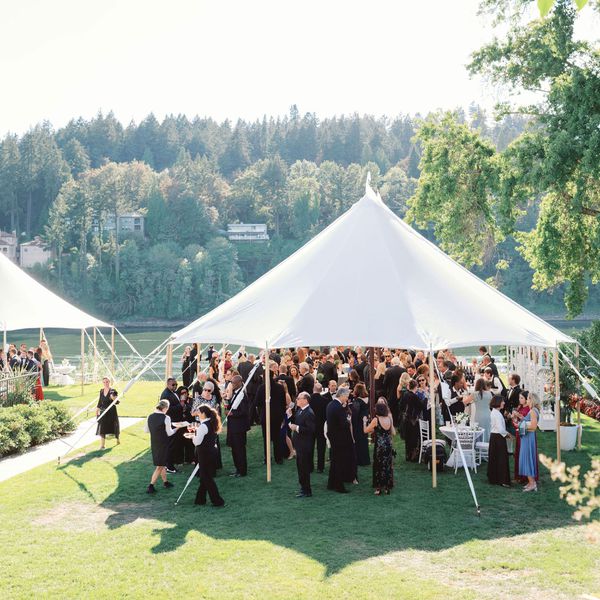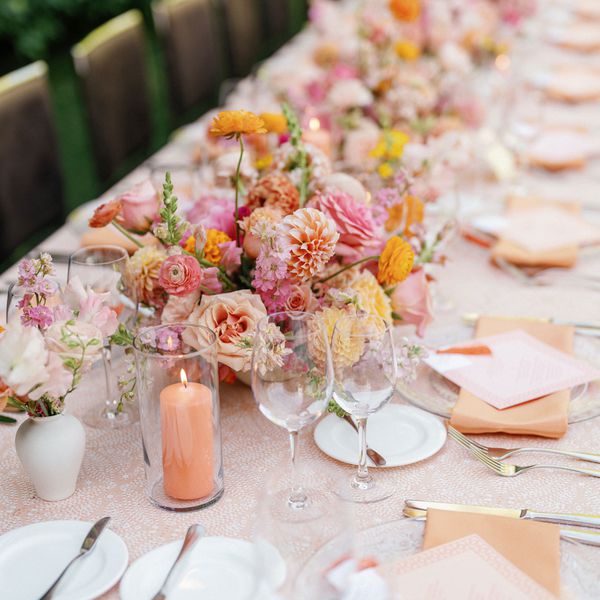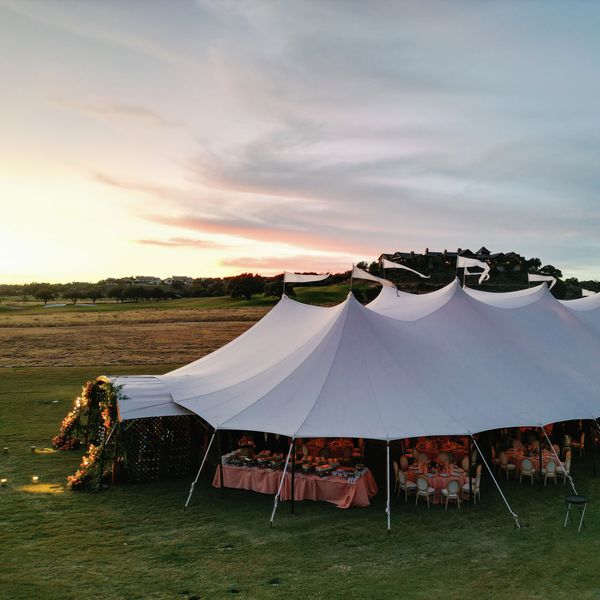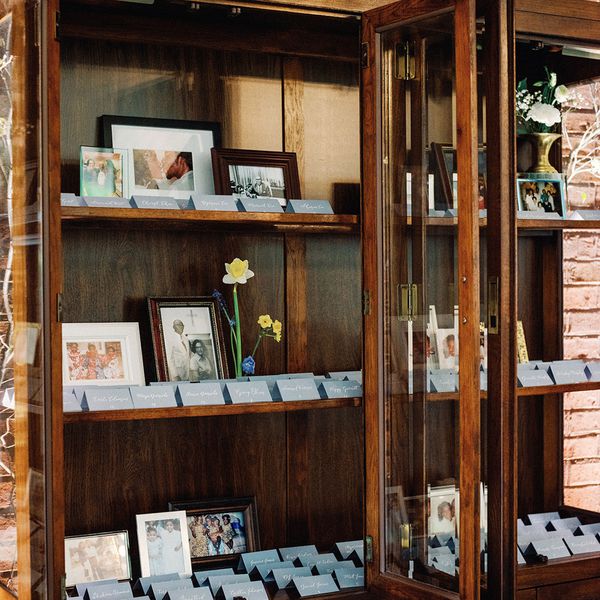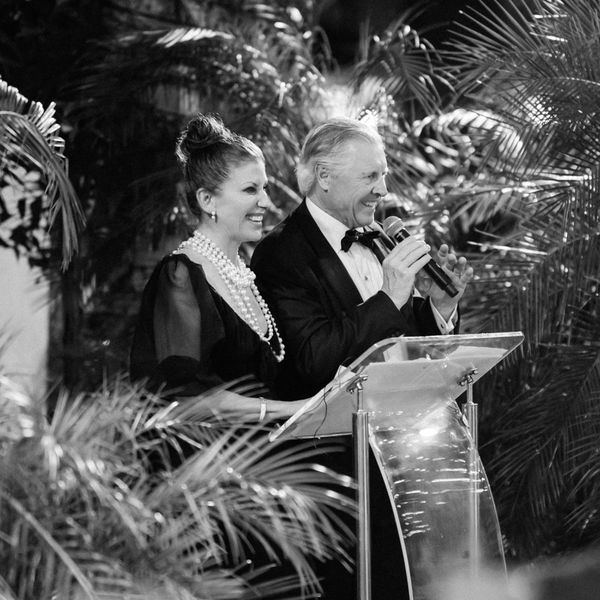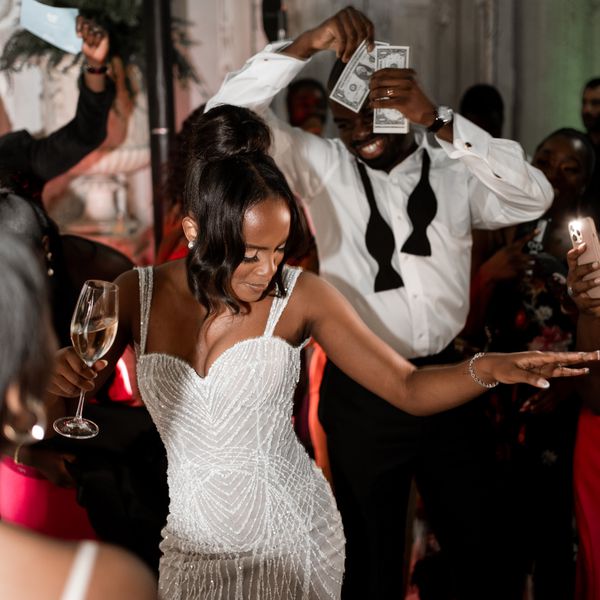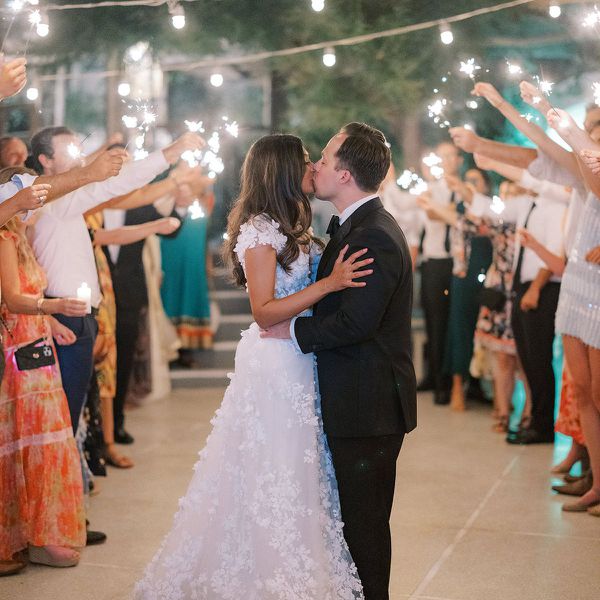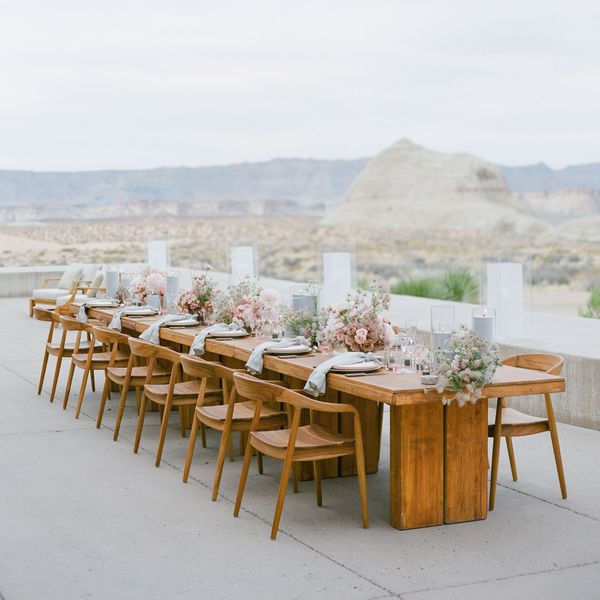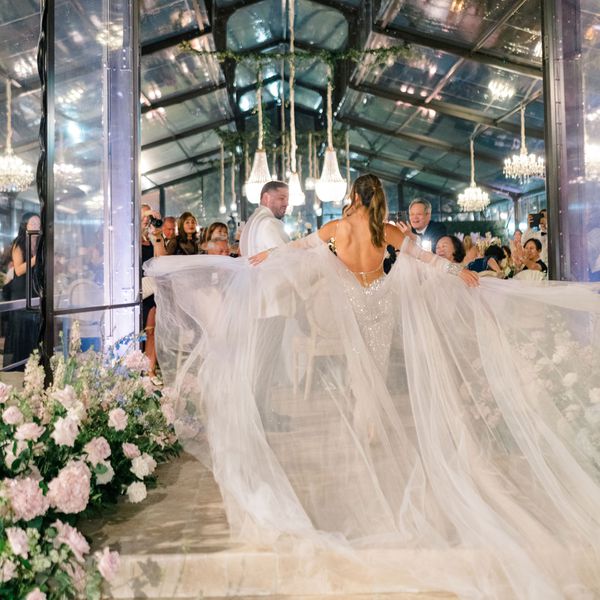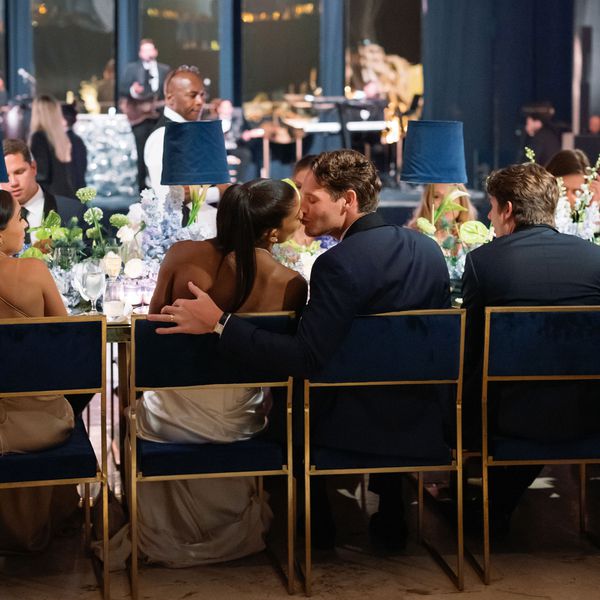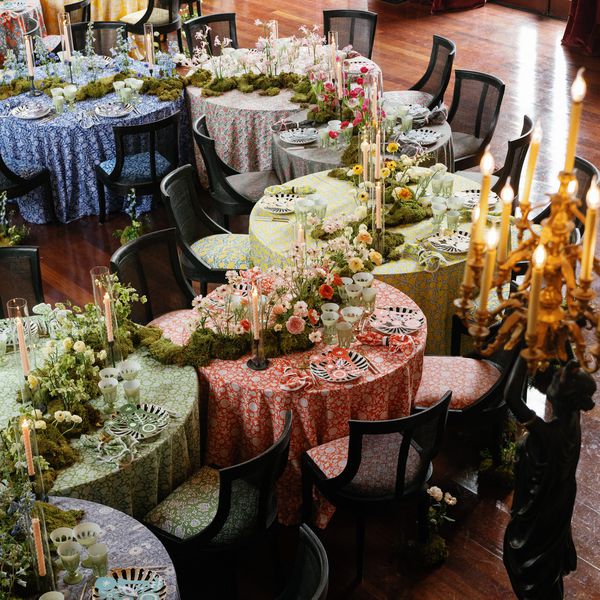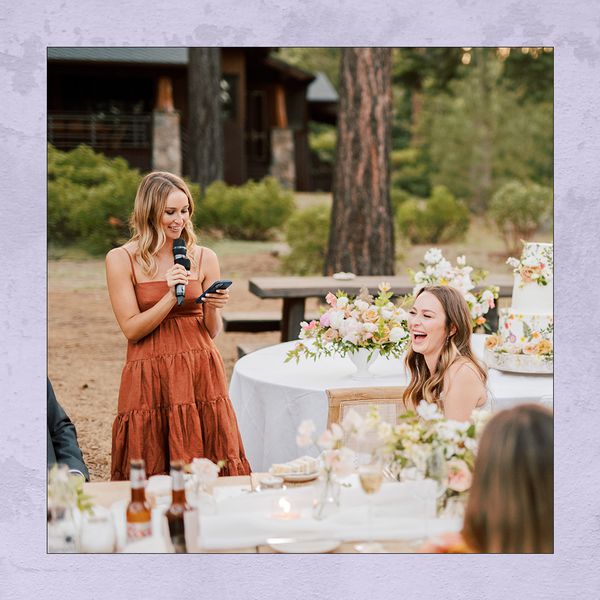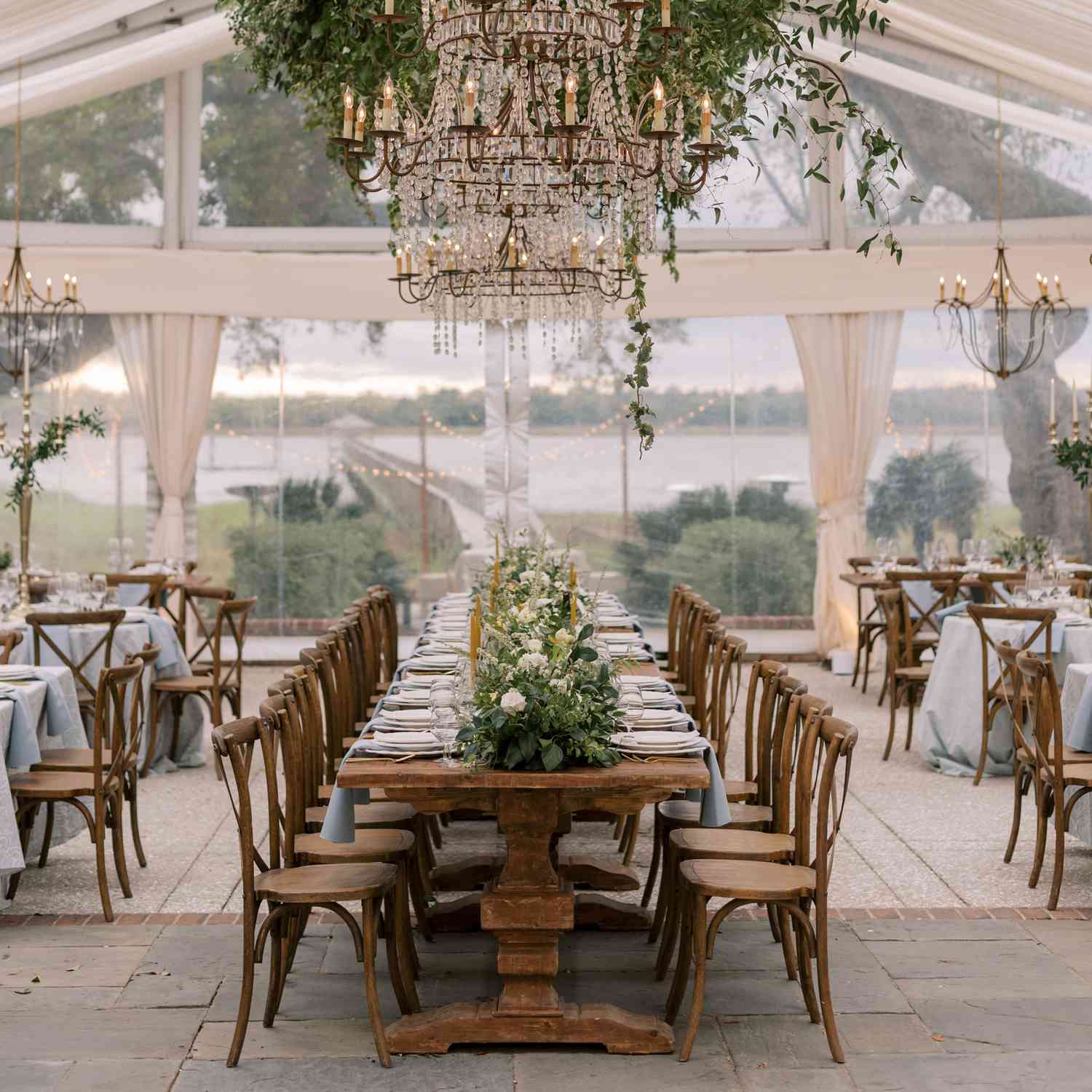
Photo by Kelsey Halm Photography
It’s a crucial—yet often stressful—part of wedding planning: creating the seating chart. Figuring out where all of your loved ones should sit and eat dinner on your big day is quite an undertaking. And even if you opt not to have assigned seating at your wedding, there’s still the question of where you and your partner should sit. Some couples opt for a sweetheart table to carve out an intimate space for just the two of them, while others gravitate toward organizing a head table with their closest friends and family members.
Unlike a small, sweetheart table, a head table allows you and your parter to enjoy your dinner alongside some of your loved ones, typically the members of your wedding party. However, if you opt not to have bridesmaids and groomsmen at your nuptials—or have a few too many of them to all fit at one table—the logistics of these stations can get a little tricky. Here, we turned to the experts to answer all of your questions about head tables and learn how to optimally design your seating chart. And regardless of the reception arrangement you choose, just remember: Who you want to sit next to you during your celebration is ultimately your choice.
Meet the Expert
Nancy Park and Paean Wang are the principal planners of So Happi Together, a boutique event design, planning, and coordination company specializing in weddings.
Who Traditionally Sits at the Head Table?
In general, a seat at the head of a table is considered an honorary placement, showing a person's importance in a room. That idea also translates to the wedding head table. While you can choose to organize your reception however you like, newlyweds traditionally sit with their wedding party at a head table. The best man and the maid of honor will typically be seated next to the couple, and the rest of the party will occupy the surrounding chairs.
"Traditionally, everyone at the head table would be seated facing the dance floor and all of the other guests as a seat of honor, giving them front-row seats to any toasts or dances," say Nancy Park and Paean Wang, the principal planners of So Happi Together. "When there is a stage with a live band, the head table would be on the opposite side of the dance floor, facing the band. However, we often seat people on both sides of the head table now so that it feels more organic to the dining space. We do typically keep the two seats in front of the [couple] empty so that they still have a nice view of all their guests and vice versa."
However, the head-table arrangement can also shift to fit your personal preferences. "There are some instances where immediate family or parents also sit at the table," Park and Wang say. Even if you're not having them sit at the head table, make sure to give your parents a prime seat closeby, so they can clearly see the speeches.
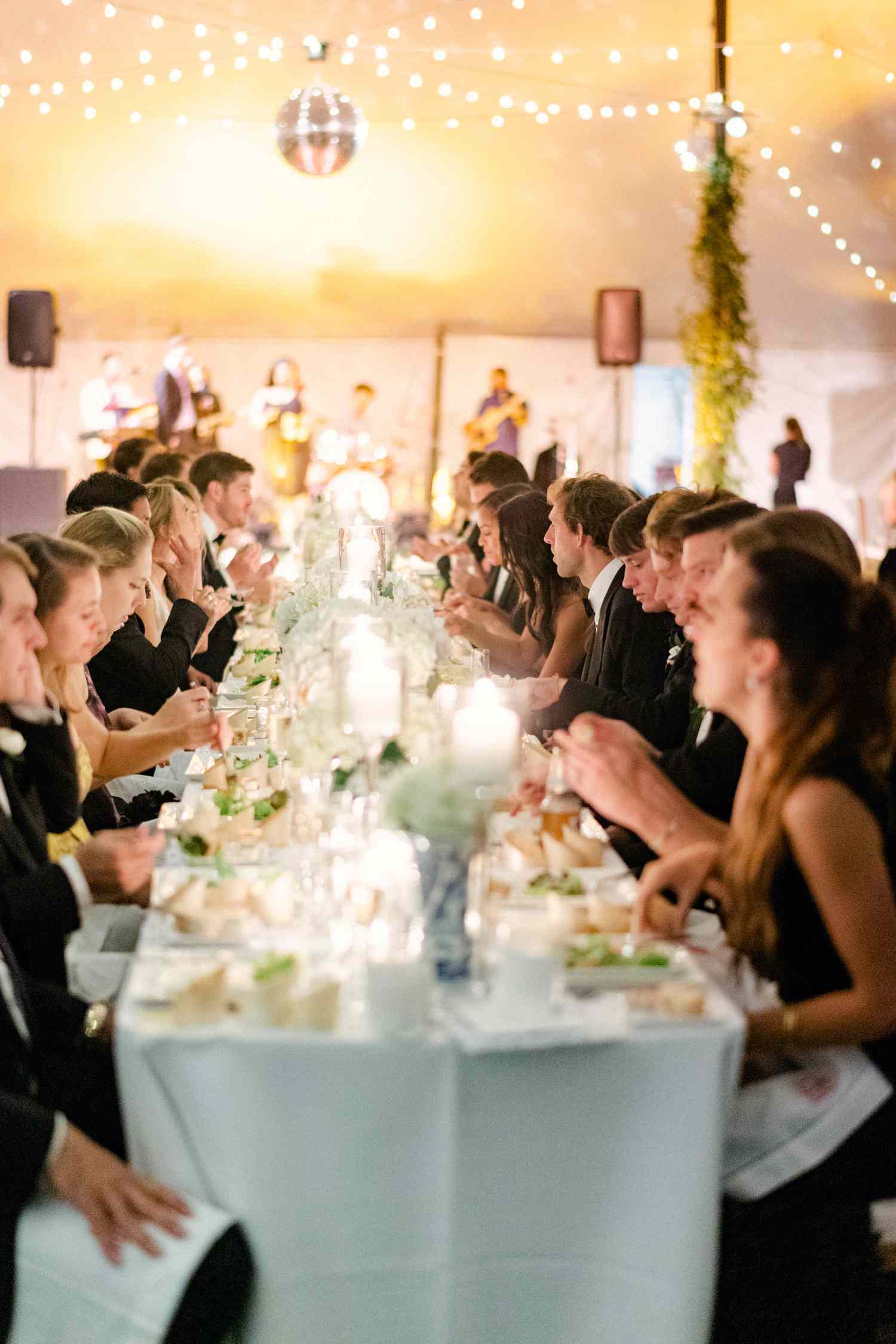
Photo by Alicia King Photography
Who Sits at the Head Table If There Is No Wedding Party?
Like some modern couples, you may choose to forgo having a wedding party. In this case, there's more flexibility when it comes to the head table. When selecting your table-mates, consider who you want to spend the most time with during the reception. "Many of our couples still have very close friends sit with them at a head table if there is no formal wedding party," Park and Wang say. "Most of our couples who don't have a party still choose to ask a few close friends to get ready with them on the morning of the wedding. These are usually the same people seated with them for dinner."
You can also opt to make it a family-only head table. "Many of our brides and grooms share the table with their immediate family—mainly their parents, siblings, and their siblings' plus-ones," Park and Wang say. It also may make for some great photos: "We find that some of the sweetest moments captured at the reception are during the heartwarming conversations our couples have with their parents and siblings during dinner," the duo adds.
Do Wedding Party Plus-Ones Sit at the Head Table?
It depends. While plus-ones have traditionally been excluded from the head table, many modern couples opt to add them. "It's nice for the wedding party to have their significant others with them at the head table, as this is where they will be enjoying their dinner," Park and Wang say. "Most of our couples are not as interested in forcing their wedding party to fulfill some traditional 'duties' on the wedding day as they are surrounded by their loved ones and making sure they all enjoy the celebration." However, if you do decide to include plus-ones, be mindful of the space you're working with. "If seating the wedding party and their plus-ones at the head table makes it too large for the layout and space, our couples will sometimes opt to have them seated at other tables by the dance floor, and simply sit at a head table with immediate family or choose to go with a sweetheart table instead," Park and Wang add.
:max_bytes(150000):strip_icc()/greenery-head-table-09-12-37acd0c5051e4e07a519fee88d1d3f42.jpg)
Photo by Caroline Lima Photography
What Should You Do If You Don't Want a Head Table at Your Wedding?
There's no rule when it comes to where you and your partner sit at your reception. If you don't want to have a head table at your wedding, you can opt for a sweetheart table, carving out an intimate space for just the two of you to enjoy the celebration together. It's also perfectly acceptable to enjoy dinner at a regular guest table—and scratch the idea of a sweetheart or head table altogether. At the end of the day, pick the option that makes the most sense for you.


